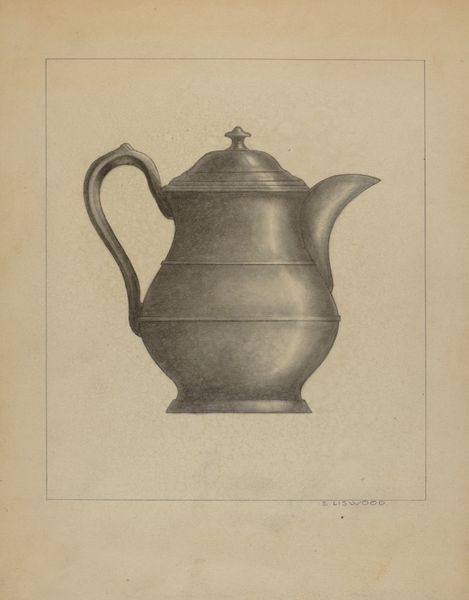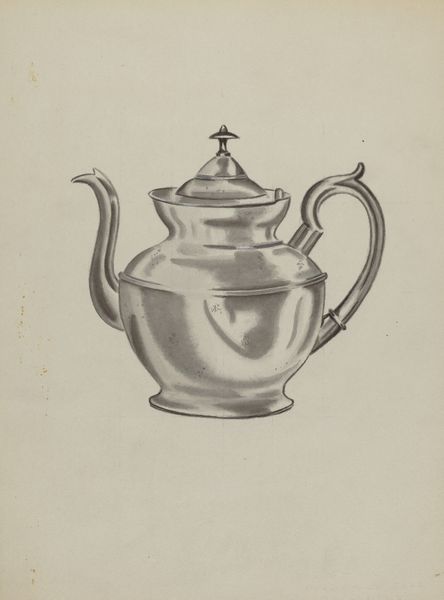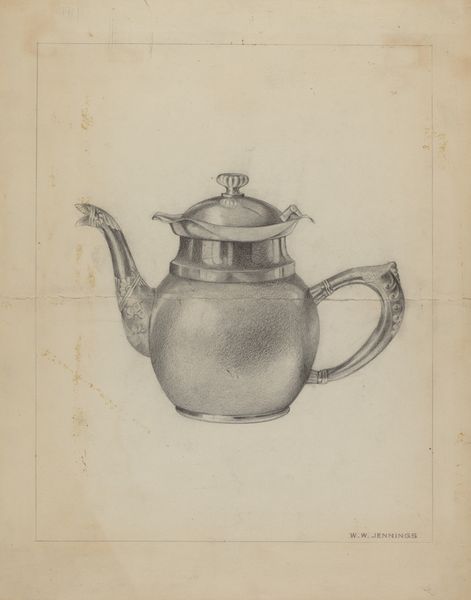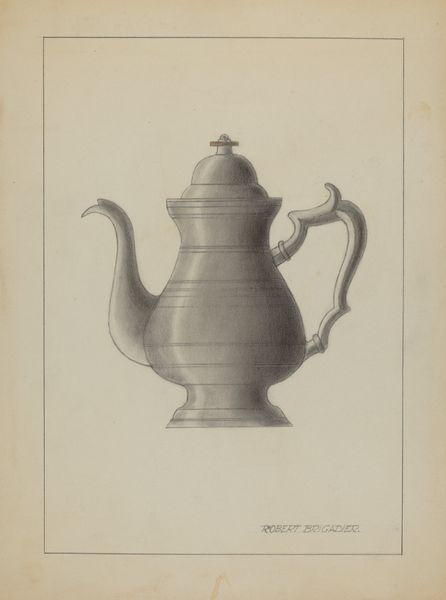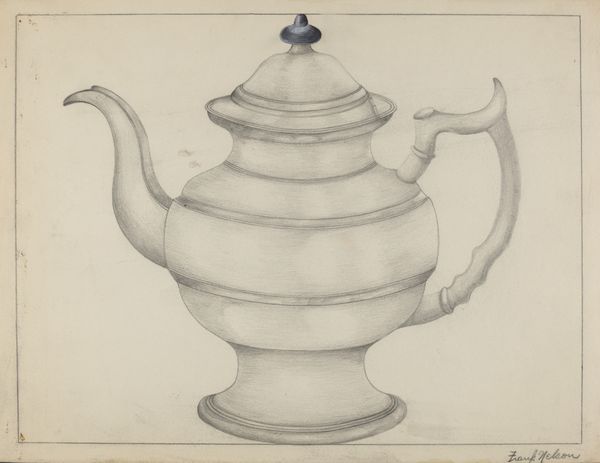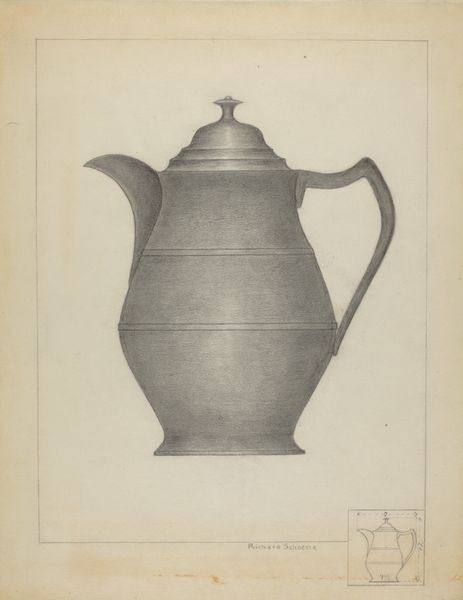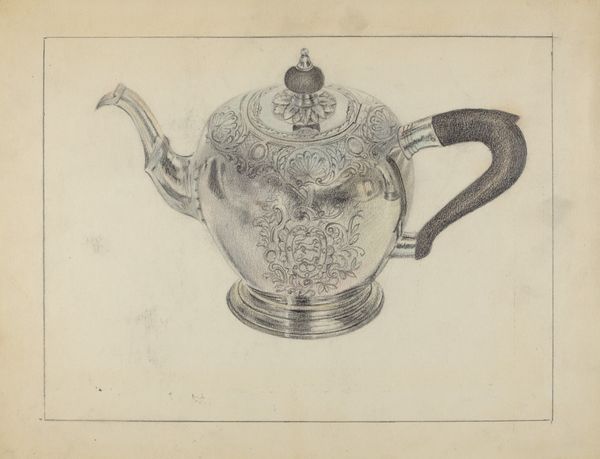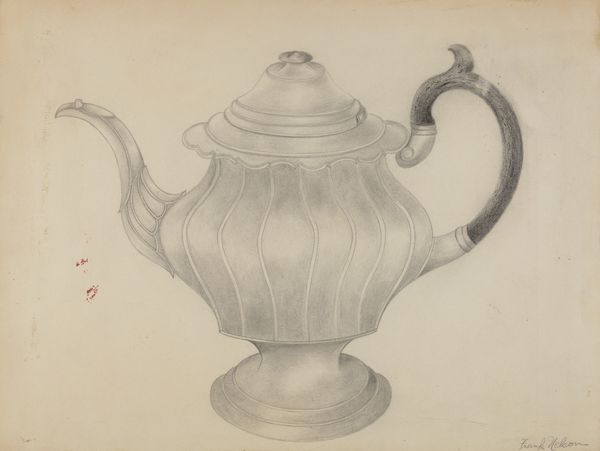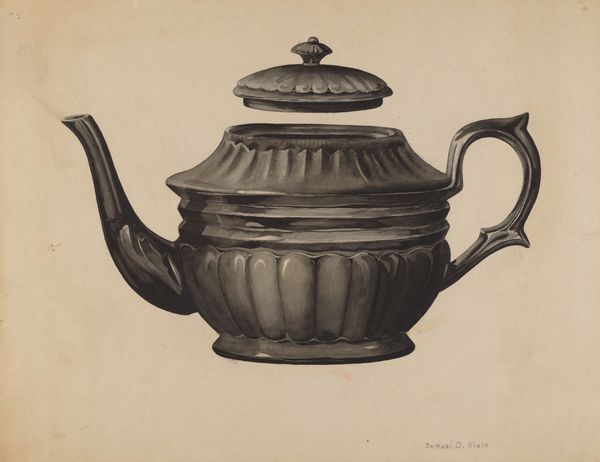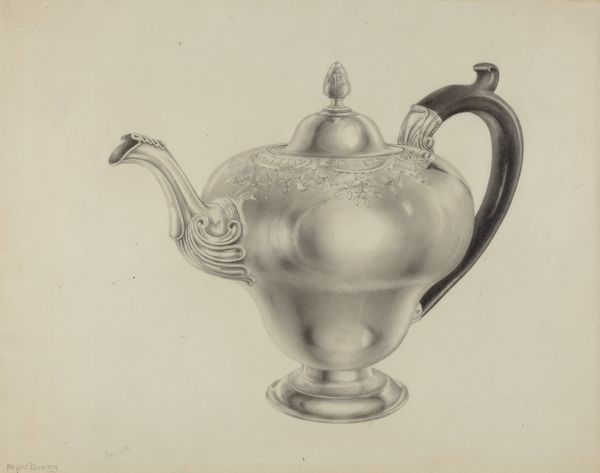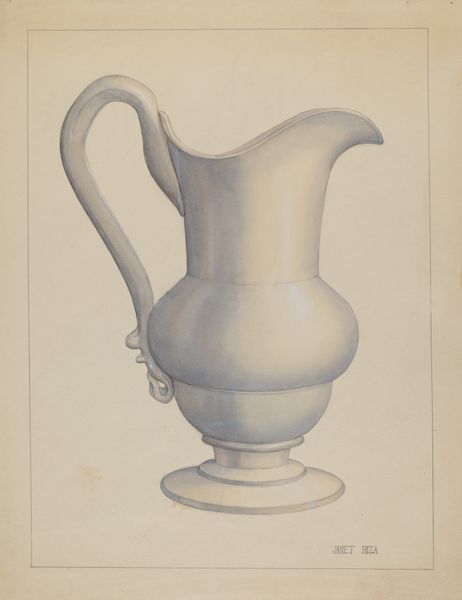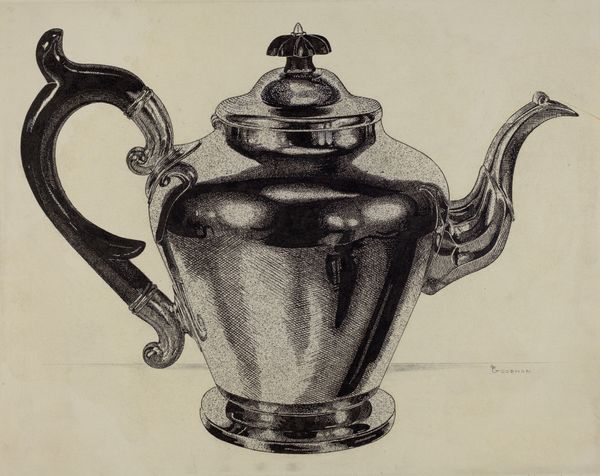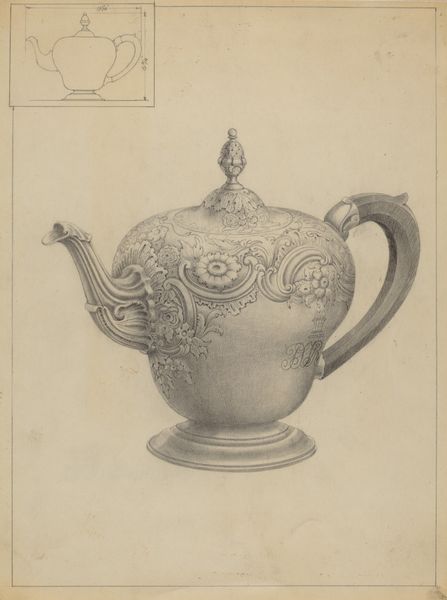
Design for a Tea Pot Removed from the Factory Record Book 1850
0:00
0:00
drawing, print, pencil
#
drawing
# print
#
pencil drawing
#
coloured pencil
#
pencil
#
academic-art
#
decorative-art
Dimensions: 17 3/4 x 12 in. (45.1 x 30.5 cm)
Copyright: Public Domain
Curator: What an interesting drawing—it's delicate, even fragile. Editor: Indeed. The piece you're looking at is a design for a teapot, removed from the factory record book of Haviland & Co. It's dated around 1850. You can find the original at the Metropolitan Museum of Art. Curator: My immediate thought is that it looks rather stately. The ornate detailing gives it a somewhat aristocratic air, don't you think? I wonder, who was expected to use a teapot like this? Editor: Good question. Looking at this through the lens of industrial history, Haviland & Co. was keen to tap into burgeoning markets—so yes, such design points to elite consumerism. However, they were also responding to evolving socio-economic strata and thus trying to position their ware as a symbol of elevated taste. Think about tea ceremonies as sites of enacting gender and class relations at the time, it speaks to a lot about status. Curator: And one imagines how carefully such tea services were arranged. It brings forth considerations regarding labor and class within these dynamics; domestic workers carefully setting the stage. It feels vital to account for how these objects operate as signifiers for the embodied labour involved. Editor: Precisely. Haviland's innovation lay in adapting industrial production to emulate hand-crafted aesthetics, which helped create aspiration around even everyday objects like teapots. Consider too, the broader narrative of mid-19th-century design reform—it all became interwoven with social politics. Curator: Do you see a negotiation of different tastes at play? Almost a tension between utility and decoration in the rendering here. Editor: Yes, there's this tension in form versus function certainly at the level of design. The drawing allows us to see these sorts of deliberations in the context of factory production, and how design choices could reflect evolving cultural and socio-economic contexts. Curator: I'm glad that we were able to dig into such interesting design dynamics through that seemingly simple image. Editor: It reminds me again about the necessity to scrutinize visual culture. It can be such a potent space of ideological construction, both then and now.
Comments
No comments
Be the first to comment and join the conversation on the ultimate creative platform.
